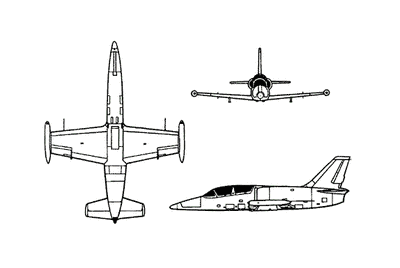Flight Appeared To Be Routine From Witness Reports, ATC
Transcripts
The NTSB's preliminary report for an accident involving an L39
Albatros indicates the flight appeared to be fairly routine. The
pilot, who according to media reports was qualified both for the
airplane and flight in IFR conditions, did not give any indication
anything was wrong with the aircraft before it went down very
shortly after takeoff from Northeast Alabama Regional Airport
(KGAD), in Gadsden, Alabama.

NTSB Identification: ERA12FA149
14 CFR Part 91: General Aviation
Accident occurred Friday, January 20, 2012 in Rainbow City,
AL
Aircraft: AERO VODOCHODY L39C, registration: N16RZ
Injuries: 1 Fatal.
This is preliminary information, subject to change, and may
contain errors. Any errors in this report will be corrected when
the final report has been completed.
On January 20, 2012, at 1818 central standard time, an
experimental exhibition, Aero Vodochody L39C airplane, N16RZ,
collided with trees while maneuvering in the vicinity of Rainbow
City, Alabama. The airplane was registered to Fighter Town USA LLC,
and was operated by a private individual as a 14 Code of Federal
Regulations Part 91 personal flight. The airplane sustained
substantial damage and a post crash fire ensued. Instrument
meteorological conditions prevailed and an instrument flight rules
flight plan was filed. The certificated airline transport pilot was
fatally injured. The flight departed from Northeast Alabama
Regional Airport (GAD), Gadsden, Alabama, at about 1817 en-route to
Burlington, North Carolina.
A witness stated the pilot arrived at a maintenance facility to
pick up the airplane in the afternoon. He conducted a prefight
inspection in the hangar and the airplane was towed outside. The
pilot performed before start engine checks, started the engine, and
taxied to runway 24 in preparation for takeoff. He conducted an
engine run up and departed. The witness walked back inside the
hangar and heard two loud explosions. An employee from the fixed
base operator came by and stated the airplane had crashed in a
wooded area off the departure end of runway 24.

The pilot called the FAA Birmingham Approach Control at 1815 via
radio while on the ground at GAD and requested his IFR clearance.
The controller asked what runway he would be departing from and the
pilot replied runway 24. The controller issued the clearance at
18:16:31. The clearance required the pilot to enter controlled
airspace on a heading of 140-degrees to climb and maintain 5,000
feet and to expect flight level 190 within ten minutes after
departure, and then on course when radar identified. The pilot read
back the clearance and was informed he was released for departure
and to switch to advisory frequency. There was no further radio
contact between the controllers and the pilot.
Another pilot, on the ground at GAD, waiting to depart, called
Birmingham Approach and asked if they had picked up the accident
airplane on radar. He informed the controller he watched the flight
depart and heard a pretty loud boom shortly afterwards. The pilot
also reported the airport was below weather minimums.
Another witness who lives in front of the accident site stated
her mother in law called her while she was out at a restaurant and
asked her if something had blown up at her house. She informed her
mother in law that she was not home. She immediately left the
restaurant and went home. Police and fire personnel were there and
were putting out a fire in the woods behind her house. It was
difficult to see the emergency responders due to the dense fog.
 ANN's Daily Aero-Linx (04.17.24)
ANN's Daily Aero-Linx (04.17.24) ANN's Daily Aero-Term (04.17.24): Jamming
ANN's Daily Aero-Term (04.17.24): Jamming ANN's Daily Aero-Linx (04.18.24)
ANN's Daily Aero-Linx (04.18.24) Aero-News: Quote of the Day (04.18.24)
Aero-News: Quote of the Day (04.18.24) ANN's Daily Aero-Term (04.18.24): Hold-In-Lieu Of Procedure Turn
ANN's Daily Aero-Term (04.18.24): Hold-In-Lieu Of Procedure Turn




